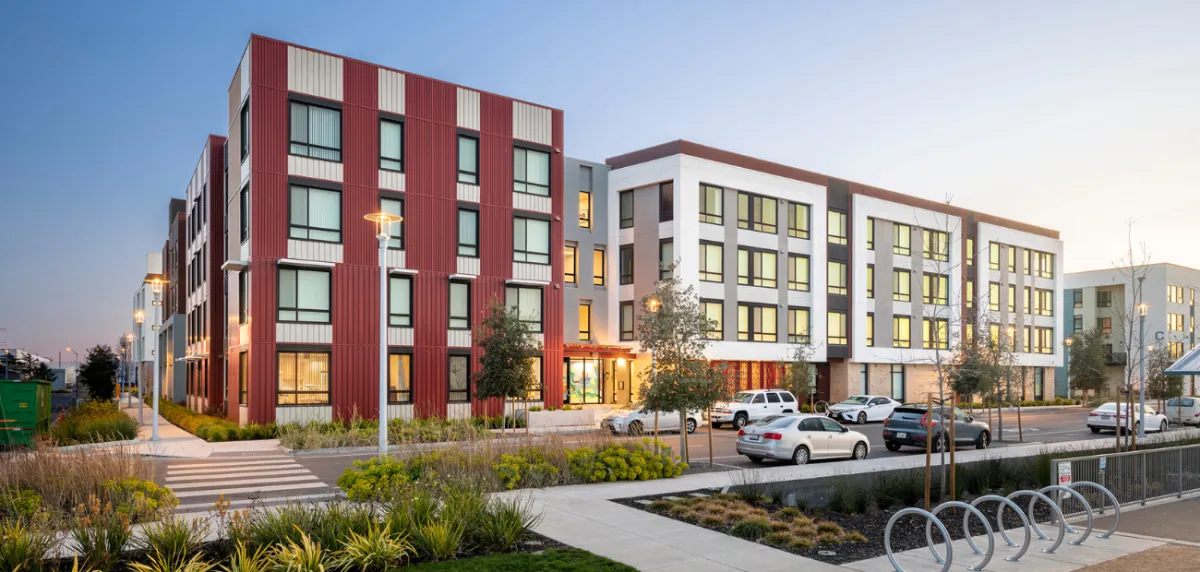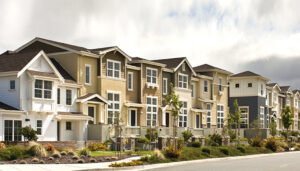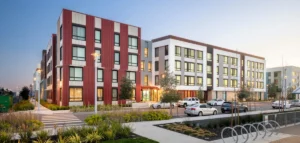 The longest bull market in history came to an end in March 2020. A pandemic-driven economic shutdown plunged us into a recession. And while we all know what a recession means for the stock market, one has to wonder what it means for commercial real estate.
The longest bull market in history came to an end in March 2020. A pandemic-driven economic shutdown plunged us into a recession. And while we all know what a recession means for the stock market, one has to wonder what it means for commercial real estate.
To better understand the performance of commercial real estate, let’s look to the past. Over the last 40 years, there have been five distinct recessions. CBRE evaluated the performance of multifamily, industrial and office real estate during the last two of those recessions (2001 and 2008-09).
2001 Recession
During the 2001 recession, CBRE found that multifamily outperformed office and industrial real estate. Any negative growth trends seen during the recession were more prolonged in industrial and office while minimized in multifamily.
Additionally, the post-recession recovery was far more robust for multifamily than it was for those other two commercial real estate asset classes.
2008-2009 Recession
When CBRE looked at the Great Recession, it found the exact same picture: Not only did multifamily outperform industrial and office real estate; it also surpassed retail real estate.
Whether you look at negative growth trends, return to prior peak or growth past prior peak, it’s not even close. Commercial multifamily real estate far outperformed the other commercial real estate asset classes.
The superior performance of multifamily in the last two recessions is interesting, but let’s go back further and see how it performed in older recessions.
NCREIF Property Index
The National Council of Real Estate Investment Fiduciaries (NCREIF) has been tracking the performance of commercial real estate since the fourth quarter of 1977. The NCREIF Property Index (NPI) is a composite index that reflects quarterly property returns for apartment, hotel, industrial, office and retail real estate. It’s the most commonly quoted performance measure for institutionally held private real estate.
In 1998, a research paper entitled “Twenty Years Of The NCREIF Property Index” (download required) was published. That study looked at the performance history of NPI from 1978 to 1997. This time period encompasses the other three recessions that occurred over the last 40 years.
What it found was that during that 20-year period, multifamily real estate outperformed the other commercial real estate asset classes. In fact, it was the only commercial real estate asset class to average a double-digit annual return over that period.
Not only did the research show that multifamily had the best overall annual return; it also had the best risk-adjusted return (Sharpe ratio) with a low standard deviation.
Multifamily Real Estate
Certainly, there have been years in which other commercial real estate asset classes have outperformed multifamily. However, over the long haul, apartments have consistently been the top performer.
In February 2018, the National Multifamily Housing Council (NMHC) authored a study titled “Explaining The Puzzle of High Apartment Returns.” It compared the performance history of apartment, industrial, retail and office real estate from 1987 to 2016.
What it found, yet again, was that over all long-term holding periods (three, five, seven, 10 or 15 years), apartments had the highest returns, best Sharpe ratio and lowest standard deviation. In other words, apartments consistently outperformed the other commercial real estate asset classes.
Covid-19 And Commercial Real Estate
Multifamily’s superior performance history both in good times and in bad is well established. However, the global pandemic caused by Covid-19 is far from your average recession. And while the history books are yet to be written about its economic effects, we do have the first 90 days that we can evaluate.
Take, for example, rent collections for apartments. NMHC publishes a monthly rent tracker. While many expected a large number of renters to forgo their rental payment obligations, it simply hasn’t materialized. Data from over 11 million apartment units shows that 94.6% and 95.1% of renters made their monthly payments in April and May, respectively. That is only minimally down from the same time period in 2019 (97.7% in April and 96.6% in May).
In contrast, consider the year-over-year declines for hotels (paywall). Statista reports that the week ending May 30, 2020, saw an average occupancy rate of 36.6%, an average daily rate of $82.94, and revenue per available room (RevPAR) of $30.34. That’s a year-over-year decline of 43.2%, 33.3%, and 62.1%, respectively.
In fact, as of May 2020, more than a third of hotel CMBS loans and a quarter of retail CMBS loans are currently on servicer watchlists due to distress.
Conclusion
Time and time again, commercial multifamily real estate has proved its mettle as a top-performing asset class. A big part of its recession-resistant nature lies in the resilience of housing and the basic need for shelter.
This insulates apartments to a large degree from the ups and downs of the market cycles. With the low correlation to the market, strong performance history and recession-resistant nature of apartments, it’s not surprising that many people see commercial multifamily real estate as an essential component of their portfolios.











